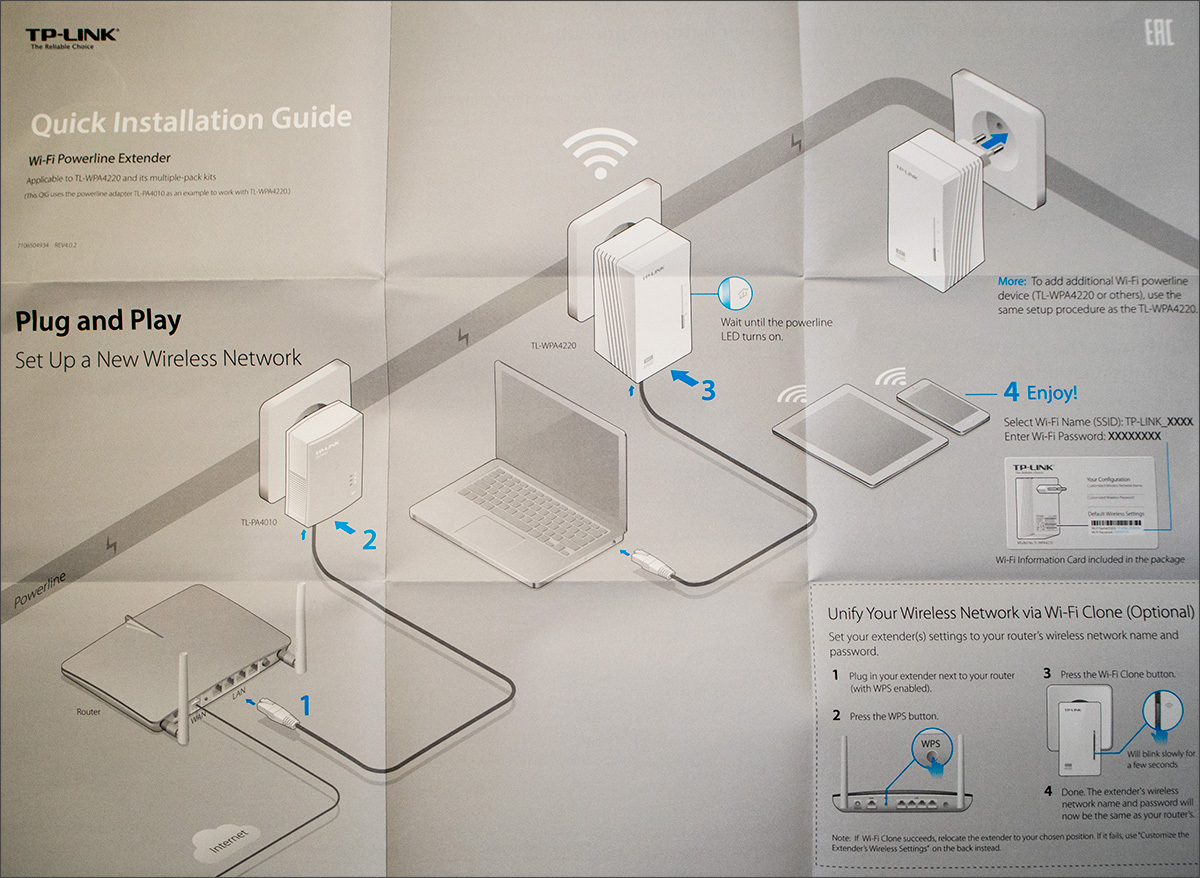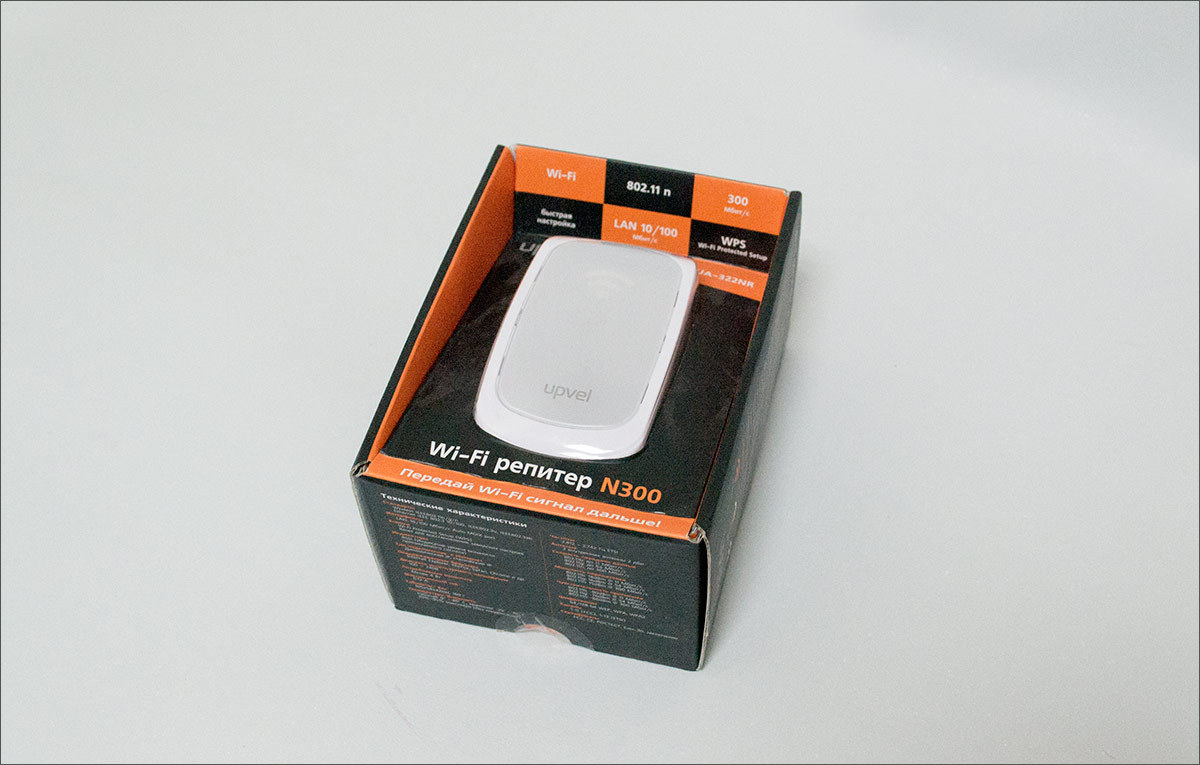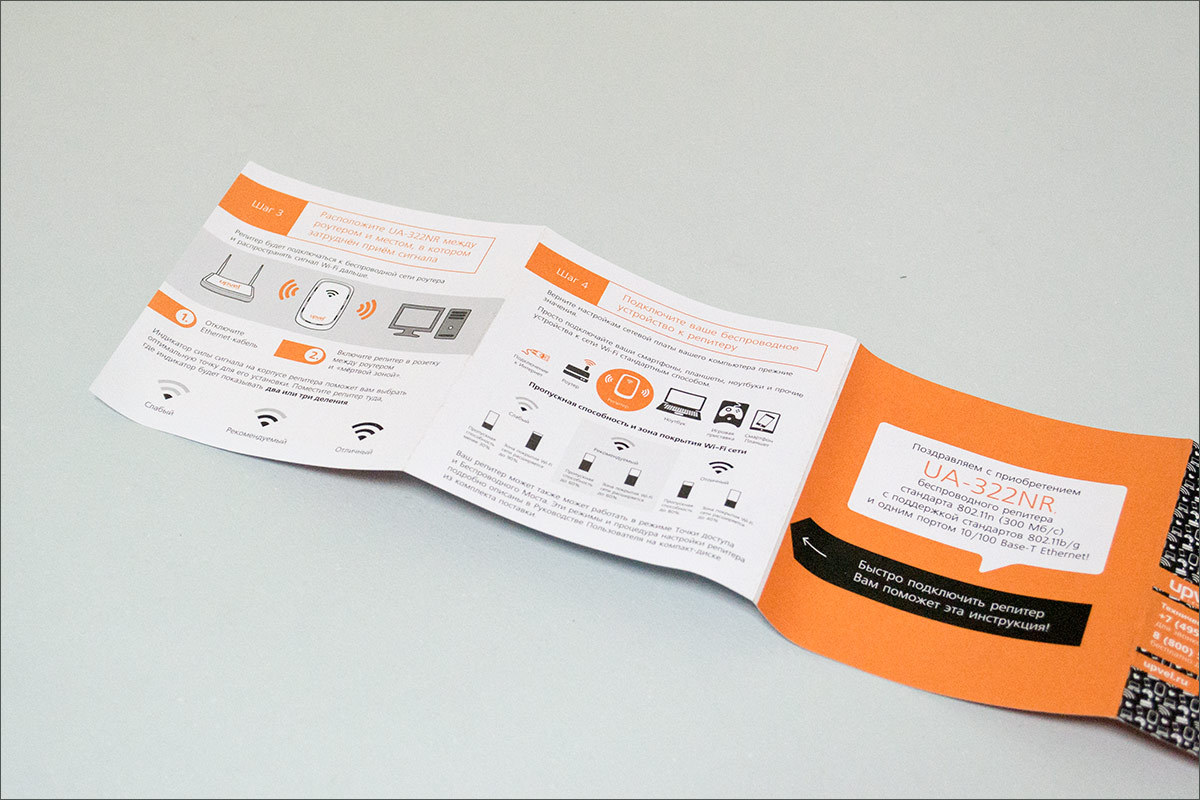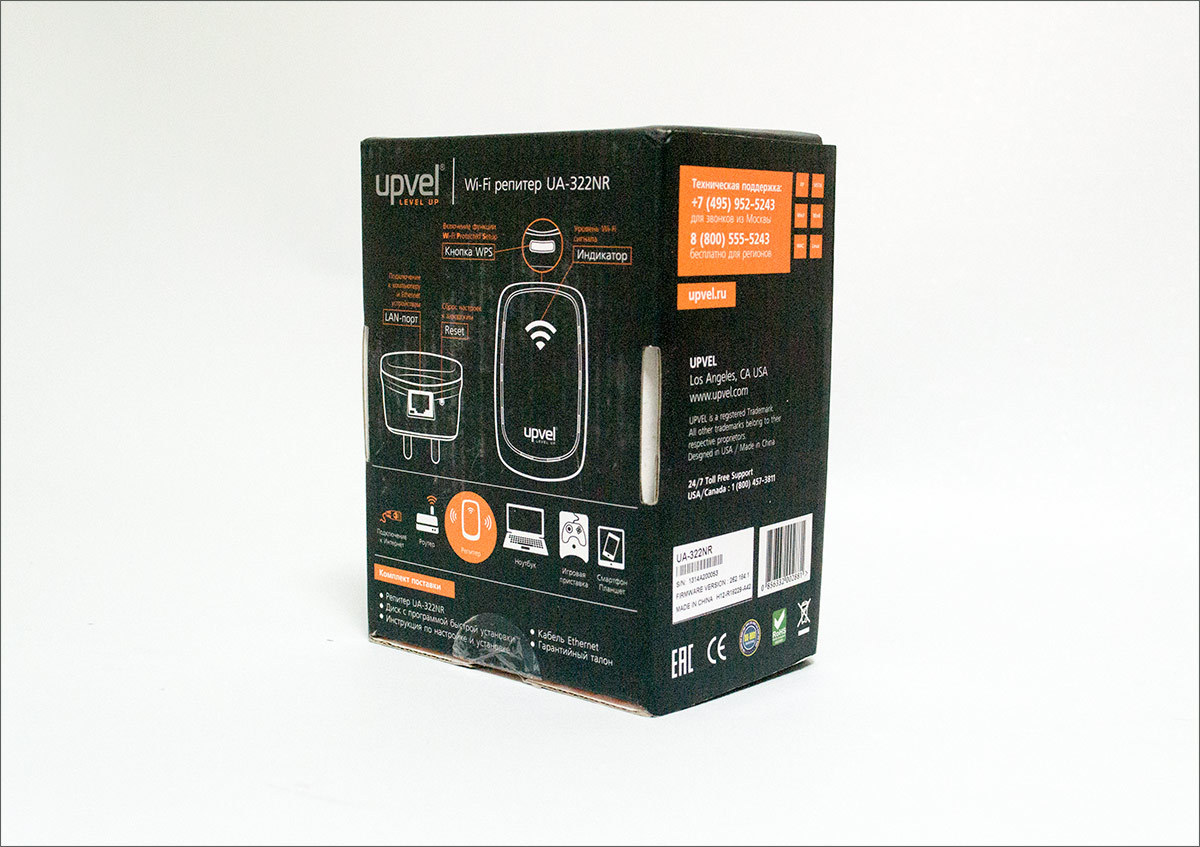Wi-Fi Repeater: Pros and Cons
Hi Geektimes! Recently, we talked about a non-standard application of the power grid at home: using the TP-Link Powerline adapter, we sent Wi-Fi through a power outlet.
In the comments I was asked why for such an elementary action I did not use a regular WiFi repeater. Well, today we’ll figure out how such a thing works, what are its pros and cons.

As I said in a previous article, the use of PLC was due precisely to the crap Wi-Fi broadcast and the transfer of the “mother” point to the 5GHz range, in which the wall penetration rate deteriorated greatly.
The scenario for using Extenders is somewhat different. Instead of using the “unblocked” channel “inside the outlet” to route the network where it is impossible to spoil the walls and the floor with cable laying, we use the trivial space of the apartment / house / office: take the point where Wi-Fi reception is so-so, the point, where is the router, and approximately in the middle we hang Extender or Repeater or call it what you want. He takes Wi-Fi where the reception is still strong enough and repeats the signal to where the "native" source no longer finishes.
In this case, the repeater operates in the same channel as the source, and, as a result, slightly reduces the overall speed for the mother access point and for itself. The ideal conditions are “direct radio visibility” between the point of reception of the signal of interest to you and the repeater, repeater and router.
As an example, take the Upvel UA-322NR Wi-Fi repeater . In Yulmart, this particular manufacturer is not available now, but there are many other options for every taste and size of the wallet. I do not think that any TP-Link or ASUS will differ greatly in characteristics or capabilities. The general principle of operation is approximately the same, as well as the scope of delivery.

The box is neat, everything is in Russian and perfectly localized, even a child will cope with the installation. Inside - the device itself, a small ehternet-cable, bright and clear instructions for initial setup and miniCD with additional information and software.

 The gadget itself, in fact, consists of an Ehternet port, a WPS button, a small “pin” Reset button, an indicator of the reception level and a socket for the outlet.
The gadget itself, in fact, consists of an Ehternet port, a WPS button, a small “pin” Reset button, an indicator of the reception level and a socket for the outlet.
After the initial setup, the gadget was moved to a room that needed to be "lengthened", but there the signal level (and, accordingly, the speed of work) were at the minimum available values, and there would be no effect from the extension of such a weak network.
Therefore, experimentally in an adjacent room with a normal reception level, a position was found in which the signal level for the repeater was at a sufficient level, and at the point where the Internet was needed, everything started up at normal speeds.
Since then, the device worked for six months without interruptions, and after a while, a wired digital TV receiver was added to it: since the Ethernet port can be used not only for setting up, but also for distributing Wi-Fi to those devices that cannot enter the network via wireless channel, but have a regular Lan port.
In order not to be unfounded, I quote the charts. This is how Wi-Fi worked before installing the repeater in the far rooms:

As you can see, the Internet is barely a soul in the body, but does not smell of speed. With the installation of the repeater in the desired room, the reception level has increased significantly, but the speed - for obvious reasons - no, since the repeater was repeating an already pretty withered signal. But after the repeater was rearranged in the “right” place, selected empirically, the signal quality increased, the speed could be called acceptable.

The result is not even required to comment. At the same time, not much more can be measured next to the router itself, and the speed loss when connecting the repeater to the network was about 10-15%:

As for the Upvel repeater, here I see one big plus. Maybe he’s also a “Chinese” inside, but this didn’t affect the quality of work, and the localization and execution of the instructions will allow even users quite far from high technologies to cope with the expansion of the network.

And so - it works, it has been working for a long time and without problems, what else is needed? :)
A Wi-Fi repeater is not a panacea, and it will not be able to raise the speed to the “original” one, which follows quite logically from its working methods. But when you need to forward Wi-Fi a little further or catch on Wi-Fi with a purely wired device - it can help out.
Among the models that are sold in Yulmart , the ASUS RP-N14 can be distinguished : it is easy to configure, has an extremely friendly Web interface and ... you will laugh, it can work as an Internet radio. Like a radio, Karl! And there is a 3.5mm minijack output, and a corresponding tab in the web face.

Okay, back to the very genre of such devices. As an alternative to Extender, you can use some cheap router (if its software and hardware allow you to work in relay mode, of course), but it takes up more space and requires configuration. But sometimes ease of use is a key factor, and in this Wi-Fi repeaters will give odds to any router.
Pros:
Minuses:

That's all for me, stay in touch, and let your Wi-Fi beat further, and Roskomnadzor does not interfere with your favorite sites!
Geek's health:
" What to do if the sound is too quiet, and how to protect your ears from too loud
" Geek's health: coffee is correct
» How not to turn sour to old age
Computer health:
" Proper nutrition
Our reviews:
" Olympus E-PL7: learn how to do state employees | Part 1
» Logitech G27: when you want to drive a sports car, Part 1 , Part 2
» Connect original gamepads to a PC
» Razer Abyssus: the most affordable Razer
»Nikon 1 S2: one-button mirrorless
» Lenovo Miix 3-1030 review
» We understand Wacom art-chaos

Theory
As I said in a previous article, the use of PLC was due precisely to the crap Wi-Fi broadcast and the transfer of the “mother” point to the 5GHz range, in which the wall penetration rate deteriorated greatly.
The scenario for using Extenders is somewhat different. Instead of using the “unblocked” channel “inside the outlet” to route the network where it is impossible to spoil the walls and the floor with cable laying, we use the trivial space of the apartment / house / office: take the point where Wi-Fi reception is so-so, the point, where is the router, and approximately in the middle we hang Extender or Repeater or call it what you want. He takes Wi-Fi where the reception is still strong enough and repeats the signal to where the "native" source no longer finishes.
In this case, the repeater operates in the same channel as the source, and, as a result, slightly reduces the overall speed for the mother access point and for itself. The ideal conditions are “direct radio visibility” between the point of reception of the signal of interest to you and the repeater, repeater and router.
Practice
As an example, take the Upvel UA-322NR Wi-Fi repeater . In Yulmart, this particular manufacturer is not available now, but there are many other options for every taste and size of the wallet. I do not think that any TP-Link or ASUS will differ greatly in characteristics or capabilities. The general principle of operation is approximately the same, as well as the scope of delivery.

The box is neat, everything is in Russian and perfectly localized, even a child will cope with the installation. Inside - the device itself, a small ehternet-cable, bright and clear instructions for initial setup and miniCD with additional information and software.

 The gadget itself, in fact, consists of an Ehternet port, a WPS button, a small “pin” Reset button, an indicator of the reception level and a socket for the outlet.
The gadget itself, in fact, consists of an Ehternet port, a WPS button, a small “pin” Reset button, an indicator of the reception level and a socket for the outlet. After the initial setup, the gadget was moved to a room that needed to be "lengthened", but there the signal level (and, accordingly, the speed of work) were at the minimum available values, and there would be no effect from the extension of such a weak network.
Therefore, experimentally in an adjacent room with a normal reception level, a position was found in which the signal level for the repeater was at a sufficient level, and at the point where the Internet was needed, everything started up at normal speeds.
Since then, the device worked for six months without interruptions, and after a while, a wired digital TV receiver was added to it: since the Ethernet port can be used not only for setting up, but also for distributing Wi-Fi to those devices that cannot enter the network via wireless channel, but have a regular Lan port.
Measure speed
In order not to be unfounded, I quote the charts. This is how Wi-Fi worked before installing the repeater in the far rooms:

As you can see, the Internet is barely a soul in the body, but does not smell of speed. With the installation of the repeater in the desired room, the reception level has increased significantly, but the speed - for obvious reasons - no, since the repeater was repeating an already pretty withered signal. But after the repeater was rearranged in the “right” place, selected empirically, the signal quality increased, the speed could be called acceptable.

The result is not even required to comment. At the same time, not much more can be measured next to the router itself, and the speed loss when connecting the repeater to the network was about 10-15%:

As for the Upvel repeater, here I see one big plus. Maybe he’s also a “Chinese” inside, but this didn’t affect the quality of work, and the localization and execution of the instructions will allow even users quite far from high technologies to cope with the expansion of the network.

And so - it works, it has been working for a long time and without problems, what else is needed? :)
General results
A Wi-Fi repeater is not a panacea, and it will not be able to raise the speed to the “original” one, which follows quite logically from its working methods. But when you need to forward Wi-Fi a little further or catch on Wi-Fi with a purely wired device - it can help out.
Among the models that are sold in Yulmart , the ASUS RP-N14 can be distinguished : it is easy to configure, has an extremely friendly Web interface and ... you will laugh, it can work as an Internet radio. Like a radio, Karl! And there is a 3.5mm minijack output, and a corresponding tab in the web face.

Okay, back to the very genre of such devices. As an alternative to Extender, you can use some cheap router (if its software and hardware allow you to work in relay mode, of course), but it takes up more space and requires configuration. But sometimes ease of use is a key factor, and in this Wi-Fi repeaters will give odds to any router.
Pros:
- Usually cheaper and easier than PLC adapters;
- Easier to set up and operate than alternatives;
- Allows you to hook almost any wired device to a wireless network;
Minuses:
- Cuts the speed of the wireless connection, and for all network users;
- It requires the selection of an “ideal” installation location.

That's all for me, stay in touch, and let your Wi-Fi beat further, and Roskomnadzor does not interfere with your favorite sites!
Geek's health:
" What to do if the sound is too quiet, and how to protect your ears from too loud
" Geek's health: coffee is correct
» How not to turn sour to old age
Computer health:
" Proper nutrition
Our reviews:
" Olympus E-PL7: learn how to do state employees | Part 1
» Logitech G27: when you want to drive a sports car, Part 1 , Part 2
» Connect original gamepads to a PC
» Razer Abyssus: the most affordable Razer
»Nikon 1 S2: one-button mirrorless
» Lenovo Miix 3-1030 review
» We understand Wacom art-chaos
